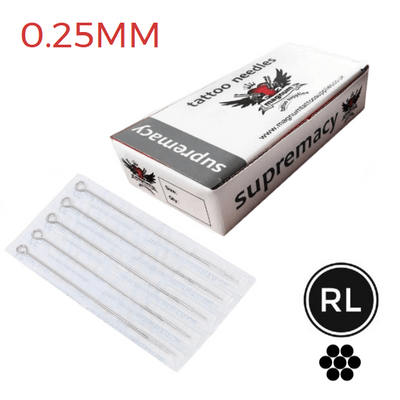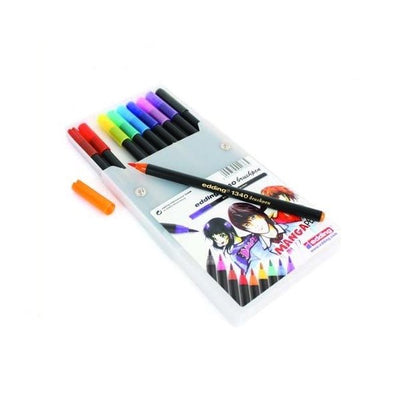To the untrained eye, a piercing needle is just another tool. But for a professional piercer, it represents the delicate balance between artistry, precision, and most importantly, safety. A single misstep can lead to complications ranging from infections to misaligned piercings.
The pressure to not only create a visually appealing piercing but also to ensure the health and satisfaction of every client is immense. And with the myriad of piercing types, skin differences, and individual preferences, mastering the use of your piercing needle is not just about poking a hole—it’s about understanding the science, the technique, and the trust behind each puncture.
If you're a piercer looking to learn more about piercing, knowing how to use your piercing needles correctly from the start is a big deal. This guide is here to help, so you can get it right and make your clients happy every time.
What is a piercing needle?
A piercing needle is a specialised needle designed to create a hole in the body to insert a piece of high-quality body jewellery. It’s made of surgical steel and is specifically designed to minimise tissue damage. Unlike sewing needles, piercing needles are hollow, which allows them to remove a small bit of tissue and provide a smooth pathway for jewellery.

Step 1. Understand the different types of needles
Before diving in, familiarise yourself with the various types of piercing needles. Each needle serves a specific purpose, so ensure you're using the right one for the job. The most common ones include:
- Cannula needles: Features a plastic sheath around the needle. Used for most body piercings in the UK.
- Hollow needles: These straight needles are hollow, creating a hole by removing a small piece of flesh.
For optimal performance and safety, consider using our range of high-quality piercing needles like B Braun Introcan Piercing Needles. Their precision and quality are unparalleled in the industry.
Step 2. Choose the catheter needle according to the thickness of the jewellery
Before anything else, you must select the right size catheter needle. The needle’s gauge should correspond to the thickness of the jewellery you intend to use. The fit needs to be snug, ensuring that the jewellery can pass through smoothly but without excessive wiggle room that might result in a larger-than-required hole.
Step 3. Withdraw the catheter needle and leave the catheter in the puncture hole
Once you've made the puncture using the catheter needle, carefully withdraw the needle, leaving the catheter (or sheath) behind. This hollow tube remains in place to help guide the jewellery into the fresh piercing, ensuring the hole remains open and maintains its shape.
Step 4. Insert the jewellery into the catheter
With the catheter acting as a guide, take your chosen piece of body jewellery and insert it into one end of the catheter. As you push the jewellery through, the catheter will slide out the other end, leaving the jewellery in the perfect position within the new piercing.

Step 5. Screw on the steel ball
Once your jewellery is correctly positioned, take the steel ball or closure piece and securely screw or fasten it in place. This not only completes the look but also ensures that the jewellery stays in position, reducing the risk of it accidentally being pulled out or the piercing closing up prematurely.
Here are some additional tips for using piercing needles:
Pierce the skin at a 90-degree angle. Piercing the skin at an angle can make it difficult to insert the jewellery and can also cause more pain.
Be gentle when inserting the jewellery. Forcing the jewellery into the hole can cause more pain and damage to the skin.
Clean the piercing regularly with alcohol wipes or a piercing solution. This will help to prevent infection. You can try our Easypiercing® Saline Solution for a quality solution.
Conclusion
Piercing is an art that requires precision, knowledge, and respect for safety protocols. If you’re considering taking up piercing professionally, it's crucial to undergo proper training. Remember, while this guide provides a general overview, hands-on training and experience under a seasoned professional are irreplaceable. Always prioritise safety and hygiene above all else!



























































 Studio supplies
Studio supplies












 Power & batteries
Power & batteries








 Aftercare
Aftercare





















 Apprentice
Apprentice


 Piercing & jewellery
Piercing & jewellery







 PMU supplies
PMU supplies




 New arrivals
New arrivals
 Gift vouchers
Gift vouchers
 Shop all
Shop all

















































